It’s safe to say that every child’s education has changed significantly over the last year. While for some kids school might mean in-person, for lots of kids across the US, your child is either remote learning full time or in a hybrid-model. Our editors live, work and mom across the country so we have a wide-range of experience, from preschool pods to high-school hybrids. Here are some of the tips that we swear will help keep your family on track.
This post is sponsored by Osmo, interactive technology that makes at-home learning fun and hands on.
Jesseca, New York Calendar Editor, Mom to a 7th Grader and soon-to-be baby girl
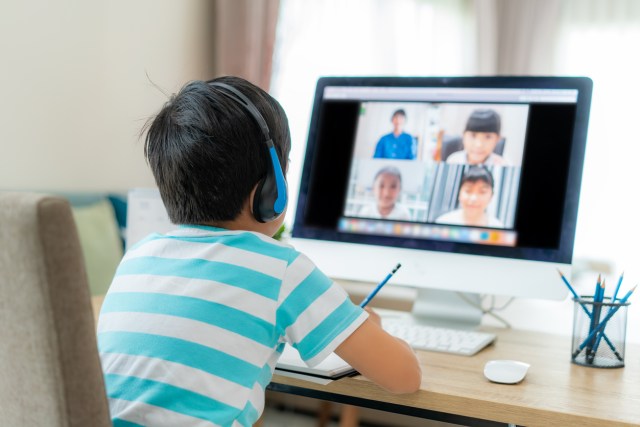
Schedules!!! My daughter is in 7th, but keeping her to a schedule was super important. It’s so easy to get distracted at home, even at her age. Also, dedicate a space just for school work if you can so when they sit in that chair or at that table they know it’s time for school.
Jamie, Copywriter, Mom to a preschooler and two year old
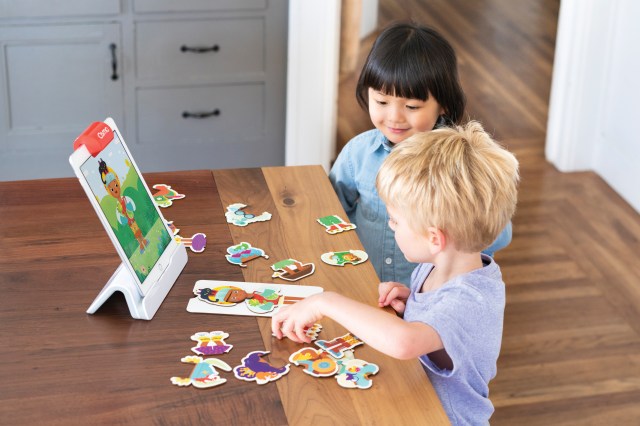
Trying to keep a preschooler engaged in online learning is like waiting for a pig to fly: not going to happen. I nearly flew off the ground myself when we found a tool that he LOVES, combining learning and laughs—Osmo! This smart tool turns a tablet into an interactive learning game. The way that these lovable characters engage kids in games that sneak in smarts is unique in that it's one-on-one interactive. Osmo can "see" how he's doing with an activity and responds in real-time. This personal attention helps my kid focus, connect, learn and have a blast doing it. Math, spelling, reading, art, and even coding—these kits have it all covered, and they come in sets based on your kid's age, with options for ages 3-5 and ages 6-10. And now I can put my feet up for a sec and officially be "off-duty" as a teacher for a while.
Beth, San Diego Editor, Mom to a 4th and 8th grader
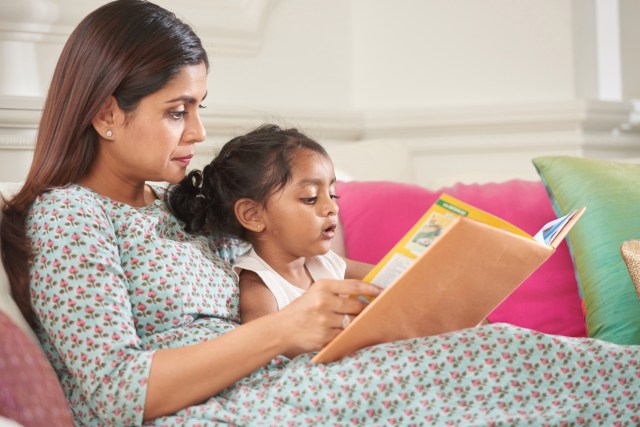
I try to schedule snack breaks/recess breaks/lunch around the same time they'll have them at school when it resumes. Also, dedicate a finite amount of time to each task to lessen burnout and frustration. If you're their first foray into "real" school, you want to make positive associations with the lessons, so if things aren't working, take a movement break.
My kids learn better when moving, so we'd walk the dog to learn multiplication tables (I'd quiz them while walking), or I'd have them bounce or kick a ball or dance around the room to learn facts. Sitting still can often be the enemy for kinetic learners. I know at school they may not have the liberty to move around, but may as well take advantage of it at home.
Don't ever underestimate reading aloud to them. I swear my kids are the people they are today because from a young age we read them all the classics aloud, including Charlotte's Web, The Lion the Witch and the Wardrobe, all Roald Dahl's books and more. I think reading is the single most important thing a family can do together when it comes to furthering their education.
And, for those with young kids, I read a good tip. Pack their lunches in whatever containers they'll use when school starts to make sure they can easily negotiate all the lids, snaps, etc. on their own and to see what they can eat in what amount of time (i.e. a 20 minute school lunch break when they eventually return to the classroom).
This post is sponsored by Osmo, interactive technology that makes at-home learning fun and hands on.
Shelley, Atlanta Editor and mom to a 6th, 4th and 1st grader and preschooler
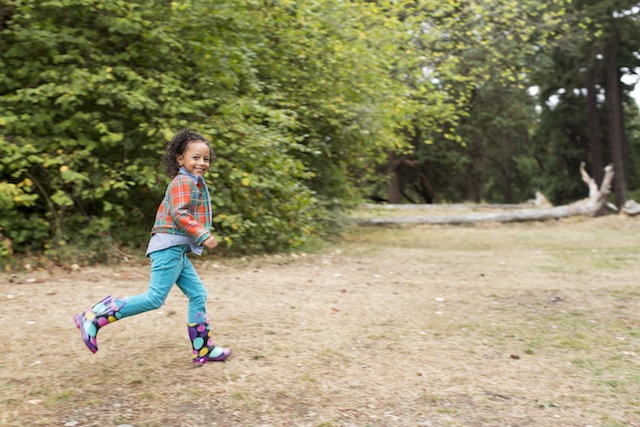
Our schools shut down last spring and I had four kids (my Kindergartner at the time was in a dual language program) at home distance learning from March until May. We crank up again soon. Here are some things that helped me:
1. Tequila has fewer calories than wine.
2. Most of my frustration was in troubleshooting the different platforms. Try to give yourself some time before they get started each day to boot up the computer, pull up the agenda, print out the worksheets, and pull together any supplies you need. In those early elementary ages, lots of the activities are hands-on, so you'll save yourself some headache by getting ahead of the daily rush to find Elmer's.
3. Schedule breaks, and force them away from the computer. Our teachers gave us a LOT of optional activities for them to do on the computer, and my kindergartener loved some of them. During his breaks, he'd want to play them—which led to burnout by the end of the curriculum part of the day.
4. Make them run around outside for a bit between breakfast and when they sit down at the computer, if you can.
5. Incentive charts to get you through the week worked really well for me. I think it helped mine keep track of what day it was during the week, and I just customized it for whatever I needed from each kid (not getting on recreational screens until after "school" ends, chores are finished, and some form of outdoor exercise completed for the 11 year-old, etc.).
Andie, Spoke Contributor Network Editor, Mom to a 1st and 6th grader
Did you know prosecco is also significantly lower in calories than wine?
But in all seriousness, I found the below attention-span breakdown incredibly helpful to know which can help set my own expectations. And, if something is causing frustration, abandon ship and try again another time. Break whatever you’re doing down into smaller/more manageable bites or do your own version in some other way.
Childhood development experts generally say that a reasonable attention span to expect of a child is two to three minutes per year of their age. That's the period of time for which a typical child can maintain focus on a given task.
Average attention spans work out like this:
- 2 years old: four to six minutes
- 4 years old: eight to 12 minutes
- 6 years old: 12 to 18 minutes
- 8 years old: 16 to 24 minutes
- 10 years old: 20 to 30 minutes
- 12 years old: 24 to 36 minutes
- 14 years old: 28 to 42 minutes
- 16 years old: 32 to 48 minutes
Amber, Managing Editor, Mom to a 4th grader
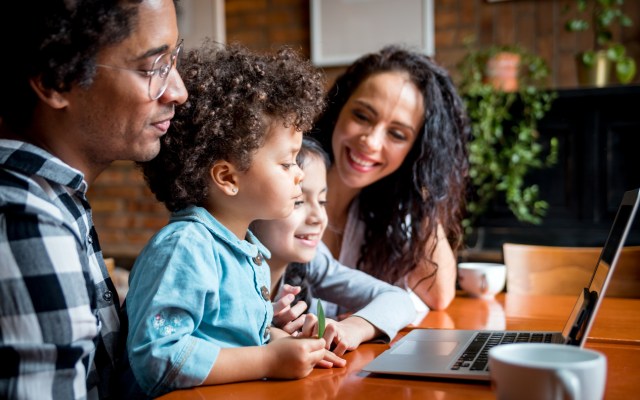
The designated place to do the work is key. We didn't have that for H and it made things harder, so we're setting it up now and getting his "input" on his own desk. My idea is to make a long desk that another adult can sit at next to him (but that's a whole other project).
Also, a big white board or printout for your daily meetings helps. We never went to the stage of having actual printed calendars but every morning we check in and say "What meetings do you have?" And coordinate the times, make sure he’s set up with a book or whatever he's supposed to be doing at the same time as a meeting I need to focus on. I want the whiteboard to make it clear to everyone in the house the times I am NOT available as well.
Try not to feel guilty if you are getting stuff done and your kids are online more than usual. We were like a zero screen time during the week family before Covid. Ha! I laugh in the face of February 2020-Amber.
Another tip is not exactly school-related, but allow your kids a time to hangout online with some of the other kids and just chat/share. Some teachers facilitate this, but we just coordinated directly with a couple of the parents.(There may be restrictions on your school's accounts being able to do zooms or hangouts.) But you can even just use Facetime with another parent, and let your kids build, play, color, talk to another kid while they're doing it to help form bonds. I'm usually in the room, but I try to give him some space to goof off with his friends. We also found we could use it as a motivator: if you want to do your google hangout with Oliver, by 2 p.m. on Friday you need to be done with xyz. So we scheduled those casual things for Fridays whenever possible.
This post is sponsored by Osmo, interactive technology that makes at-home learning fun and hands on.
Kate, Bay Area Editor and Content + Calendar Manager, Mom to 4th, 6th and 7th grader

My older two are pretty self-sufficient (YAY) but for my youngest (4th grade this year) we had to get everything all planned out on the weekend so he'd be in the right frame of mind when school started Monday morning. I had bins for each of his subjects (from the Dollar Store) and he would keep his book, workbook, homework and lesson plan for the week in there. This helped a lot so he wasn't scrambling to find assignments and getting stressed out. He'd just grab the bin for that subject and it was all there. It made him 90% self-sufficient by the end of the school year.
I also tried to be extra chill about it all because he puts a lot of pressure on himself already. So if there was an assignment that was causing a lot of stress for him, we'd just table it. If it meant that he was going to turn it in late, so be it. He'd work on these with his tutor or I'd let the teacher know that it was just too much and she was fine with that. For me, the mental stuff was more important than the actual classwork.
I'd get the kids learning to type sooner than later. I had them focus on this over the summer. This is the program we used.
I found that using a timer with my youngest was so helpful. He used a FitBit and was able to set the timer himself so that he could give himself a five minute break between assignments. He wasn't allowed to use screens during this time, had to be active or outside at least. It helped as a brain reset but was short enough so he didn't lose momentum.
It took a few weeks but we definitely got our flow going and now they aren't even worried about the online learning at all.
Allison, Seattle Editor, Mom to a two, nine and 12 year old.
One thing we're working on this year is figuring out "gym class" so the kids get exercise, have a chance to play and get to take a brain break too. With so many things being shut down, it's tough. But we're looking into horseback riding lessons and private swim lessons, maybe tennis or golf? Some of the lower risk activities where it's one-on-one with an instructor that's actually structured. My neighbor coaches Girls on the Run and he's planning on getting a program together for the kids we can all use. My kids need that time and I'm not good at making it happen, so I feel like I have to outsource it.
We're also trying to figure out how to supplement the arts at home (band, music, art they'd normally get at school) and really make it structured. My son plays saxophone and loves it. So looking for virtual lessons or a private instructor. Art kits are another hit with my kids.
Other than that, white boards are life.
Do you have other tips that worked for your family? Share this story on your social pages and add your two cents, and tag Red Tricycle. We can’t wait to see your ideas!
—Erin Lem, with invaluable advice from Jesseca Stenson, Beth Shea, Shelley Massey, Andie Huber, Amber Guetebier, Kate Loweth, Allison Sutcliffe and Jamie Aderski
RELATED STORIES:
100+ Online Learning Resources, from Toddler to Teen
Virtual Field Trips Your Kids Will Love
Virtual Resources for Learning Science at Home
44 Science Experiments You Can Easily Do at Home
Need some fresh ideas?
Subscribe to our weekly newsletter for expert parenting tips and simple solutions that make life instantly better.
By subscribing you agree to Tinybeans Terms and Privacy Policy











